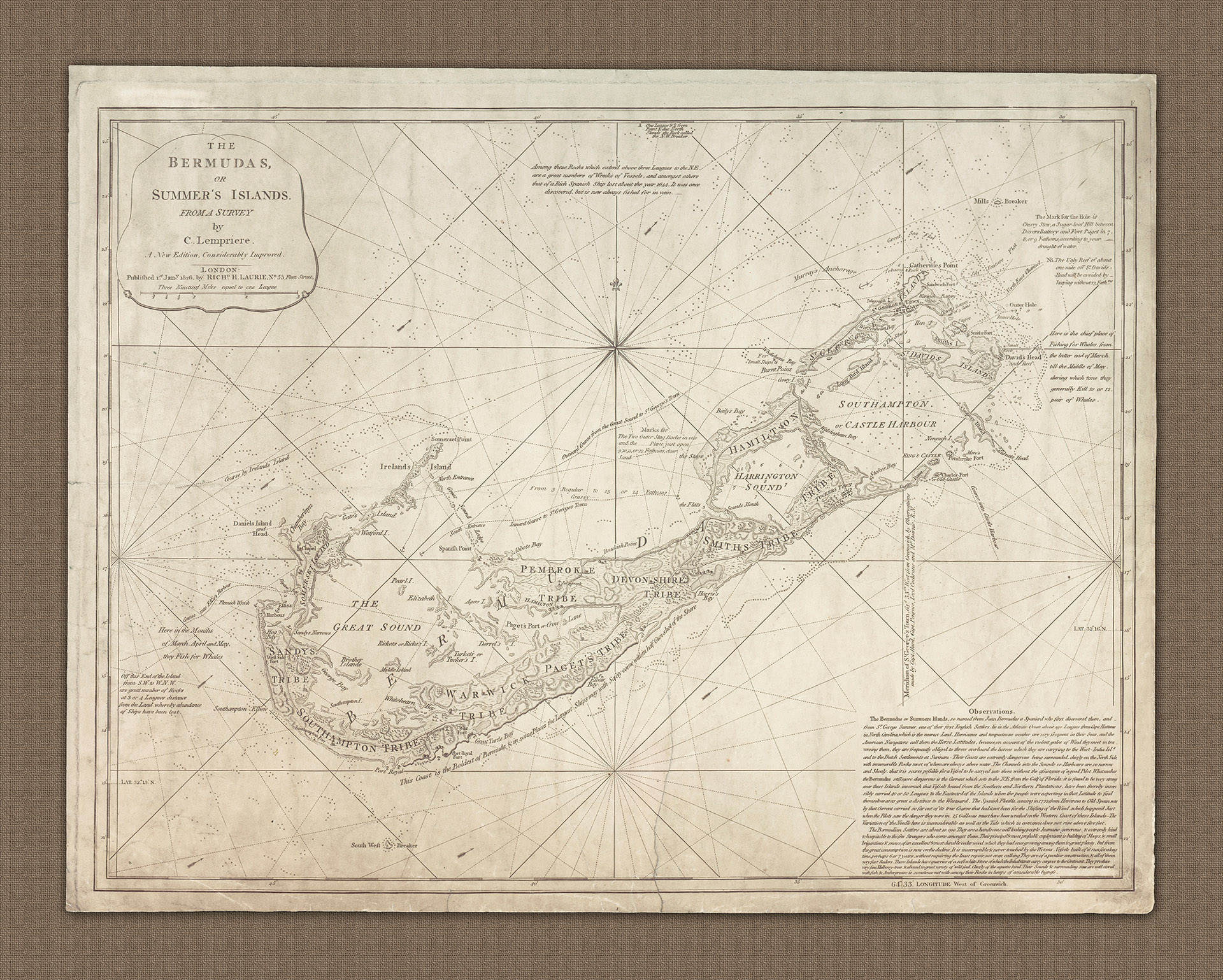SKU: A600
A600 - The Bermudas or Summer's Islands
£111.45Price
Originally published by Sayer in 1775 and then, later, by Laurie & Whittle in 1797. This edition was released by the Laurie publishing house in 1826 after the company had become the sole propriety of the Laurie family. It is taken from a survey by C. Lempriere and was publicised at the time as being 'A New Edition, Considerably Improved'.
- 1826
- Richard Laurie from C. Lampriere
- h23" x w28"
- L
- Lampriere's original Survey of the Bermudas, or the Summer Islands, was completed in 1738 and was a major advance on earlier 17th century Dutch charts of the island. The chart's influence on all subsequent published maps and charts of Bermuda is quite evident in composition and detail. The original version of this chart was first published in 1738 and bore the title: 'To his Excellency / Alured Popple Esq. / Governour of Bermuda, or the Summer Islands / This Map / From a new Survey, Correcting y.e Dangerous Errors / in all y.e CHARTS of that Place hitherto Publish'd / Is humbly Dedicated by / C. Lempriere, and W.H. Toms. 1738.' The early editions of this chart depicted the Island of Bermuda on an West/East horizontal with the Island appearing level. This edition depicts the island as it is in relation to North, at an angle of about 50 degrees. It is typical of the period that charts and maps would be reissued and stay circulation for anything up to 100 years, and this is a good example. The danger with such reproduction was of course accuracy, but it is clear that this chart was updated with some degree of accuracy. 'Sandy's Fort' is now 'Sandwich Fort', Hamilton town now appears on the map, and 'Crows Lane' is now 'Pagets Port'. Perhaps the most significant update is the inclusion of Murray's Anchorage and the channel through the reefs down to St George's Town and Castle Harbour, first discovered by Thomas Hurd as part of his definitive survey of 1783-1797. Unquestionably, one of the most attractive and important aspects of Lempiere's depiction of the island of Bermuda is the use of written notes and descriptions across the map which includes sailing directions, anchorages, reefs and channels, as well as notes on the whaling industry. The chart further details division of land and uses the original Bermudian label of 'Tribes' to distinguish the counties or districts. Forts and other military dispositions are marked and named, as are telegraphs and batteries. Churches and houses are clearly marked along with settlements and towns. The chart contains as much information about the development of the island of Bermuda as any history book. What was considered important enough to be included is as revealing, to the student of Bermudian history, as that which has been excluded. The chart was originally produced for the benefit of people back in Britain. It shows Bermuda as a stable religious, cultural, economic and military outpost. It gives no clue as to the hardships and realities - slavery, poverty, danger, climate - that living on such an island could bring.
- The Bermudas or Summer's Islands


